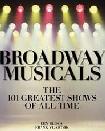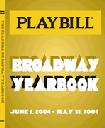SITE GUIDE
REVIEWS
FEATURES
NEWS
Etcetera and
Short Term Listings
LISTINGS
Broadway
Off-Broadway
NYC Restaurants
BOOKS and CDs
OTHER PLACES
Berkshires
London
California
DC
Philadelphia
Elsewhere
QUOTES
On TKTS
PLAYWRIGHTS' ALBUMS
LETTERS TO EDITOR
FILM
LINKS
MISCELLANEOUS
Free Updates
Masthead
Writing for Us
SEARCH
A CurtainUp Review
Mary Stuart
By Shirley Safran
Mary: " . . . I do not Speak of damnation, nor of legal guilt. Because the issue between me and England Is only one of power, not of right."
Burleigh: (Meaningfully) "Do not call on the frightening force of power Milady. It is not the prisoner's friend."
Mary: "I am the weak one here, and she the strong--Fine! Let her kill me. --She will need all her forces If I fall victim to her throne's security. For then she stands as one who rules by power Alone, and not by right. Her pose of innocence Will not deceive the world. She cannot judge me, Only have me killed. Let her then dare Appear as what she is! "
This exchange late in Act 1 of Schiller's Mary Stuart between the beleaguered Queen and Elizabeth's closest advisor, Lord Burleigh, sets the stage for this high-stakes wrestling match -- a protracted power struggle that ultimately ends in Mary's execution and the tightening of Elizabeth's grip on the throne of England. That the protagonists here are powerful women laying claim to the same throne, as well as religious adversaries and competing scions of one of the most dysfunctional royal families in history, makes for enthralling drama.
Our fascination with Elizabeth I appears inexhaustible, at least within the English-speaking world. Her ability to retain absolute power through political manipulation, personal charm, intellect and gritty resolve is breathtaking. She was also an accomplished rhetorician and linguist. And, of course, she was a woman in an age of great men! In Elizabeth the Great Elizabeth Jenkins quotes her teacher's recollection of having heard her speak to three ambassadors in Italian, French and Latin, without stopping for a word. But Schiller's play focuses on the personal struggle between Mary, Queen of Scots, and her cousin Elizabeth, whose protection Mary sought, but instead, ended up in prison for 16 years in Fotheringay Castle.
The play takes place during the days before Mary's execution, as her fate is being debated by Elizabeth's advisors, whose own fortunes hang in the balance, subject to the Queen's political whims. As a result, Schiller's depiction of the plot, counterplots, deceptions, betrayals and hypocrisies that abound in the court as it ponders Mary's fate, makes clear where he stands in the divide. Mary is more sinned against than sinning (of which she did a fair amount, she had a very messy private life), thus she represents the passionate desire for personal freedom and moral idealism. She is all heart, warm and effusive; Elizabeth is all intellect, cold and calculating (though famously indecisive).
The action alternates between scenes at Fotheringay and at the court at Westminster providing a structural balance to the intense debate surrounding Mary's fate. Dispensing with strict historical accuracy, Schiller includes in Act 3 an encounter between Mary and Elizabeth outside Fotheringay which never occurred, but which nevertheless lends a dramatic coherence as the play's turning point (we should note that even Shakespeare toyed with historical accuracy). No longer able to restrain herself, Mary rashly denounces Elizabeth in the most personally insulting manner, declaring that "England's throne by a bastard is usurped!" With this outburst her fate is sealed.
A pivotal scene in Act 4, between Elizabeth and her State Secretary, Davison, depicts her at her most devious and indecisive. She signs the execution order, gives it to Davison, admonishing him to "Do as becomes your office!", which he assumes means to carry it out. But her real motive is to distance herself from the bloody deed and to provide her with what we today would call plausible deniability. This becomes clear, when after Mary's death, Elizabeth berates Davison for doing his duty, so to speak, and sends him to the Tower to await an ominous fate.
In contrast, Mary's final scene in Act 5, in which she is given secret absolution by her steward, a recently ordained priest, elevates her to tragic heights as she bravely and magnanimously faces her death, which suggests that she has attained the personal freedom and moral stature in death that will forever elude Elizabeth in life. It is interesting that this scene with its Catholic overtones met with some criticism of Schiller, who was a Protestant (eventually identifying himself as a Christian in name only). But the impact of this is an effective dramatic device serving to illuminate Mary's superior character.
The English translation by Michael Feingold is utterly beautiful: clear, elevated in tone, poetic, yet dramatic. Even without reading the play in the original German, it would appear that Schiller has been well-served and honored.
The production and performances while generally commendable, are nevertheless somewhat uneven. Carol Schultz as Elizabeth suggests a disgruntled housewife prone to hissy fits rather than a lioness pacing furiously around her gilded cage. Righteous indignation too often gave way to petulance. Elizabeth was in life a giant and a genius.
Joanne Camp, as Mary, has an admittedly easier role to play as she is less complicated in her heartfelt passion than is Elizabeth in her multilayered machinations. Ms. Camp is at all times sympathetic and attractive; it is easy to see why men were drawn to Mary. Her final scene was quietly and poignantly affecting. The male roles were all competently played with special praise for Dominic Cuskern as a biting, contemptuous Burleigh; Sean McNall as young Mortimer, a fanatic convert to Catholicism seeking favor with Mary while deceiving Elizabeth, who, when cornered, kills himself. Also praiseworthy are Beth Dixon as Mary's nurse, Noel Velez as the unfortunate Davison and Brian Hicks as the eloquent, but duplicitous Leicester, Elizabeth's favorite.
The unit set is austere and spare, eliminating any sense of opulence in Elizabeth's court, to the extent that her "throne" is merely a plain, low-backed black chair next to a black writing table. We certainly get the symbolic point here, as we do with the costumes. The male costumes have a split personality—the tops are Elizabethan doublets, the bottoms modern pants and shoes. Is there some contemporary relevance here or is the decision purely economic?
Judging from past Pearl productions with their adherence to exact period look, I would opt for the former possibility rather than the latter. As for the women, we at first see Mary clothed in vivid red brocade, which reflects her warm, emotional nature, while Elizabeth is dressed simply in cool deep blue, skimpily adorned. According to Elizabeth's portraits, she was always elaborately dressed and bejewelled. In this production, she resembles more an attendant to the queen rather than the supreme monarch herself. In the end, however, it is the play and this splendid translation that triumphs.
|
MARY STUART Playwright: Friedrich Schiller, translated by Michael Feingold Directed by Eleanor Holdridge. Cast: Cast: Joanne Camp, Carol Schultz, Dominic Cuskern, Robert Hock, Sean McNall, Edward Seamon, Beth Dixon, T J Edwards, Kenric Green, Bryan Hicks, Raphael Peacock, Celester Rich, Noel Velez, Tyler Woods ; lights,; costumes, ; sound, Set Design: Susan Zeeman Rogers Costume Design: Jessica Ford Lighting Design: Stephen Petrilli Sound Design: Jane Shaw Running time: 2 hours and 45 minutes, with one intermission Pearl Theatre 80 St. Marks Place at 1st Avenue 212/598-9802. From 4/20/06 to 5/21/06; opening 4/30/06. Thu to Sat at 8pm; Wed, Sat, Sun at 2pm also alternating Tuesdays at 7pm . < Tickets: $40 to $50; $20, $25 student/senior rush Reviewed by Shirley Safran |
The Internet Theatre Bookshop "Virtually Every Play in the World" --even out of print plays

Easy-on-the budget super gift for yourself and your musical loving friends. Tons of gorgeous pictures.
Leonard Maltin's 2005 Movie Guide

6, 500 Comparative Phrases including 800 Shakespearean Metaphors by our editor.
Click image to buy.
Go here for details and larger image.








